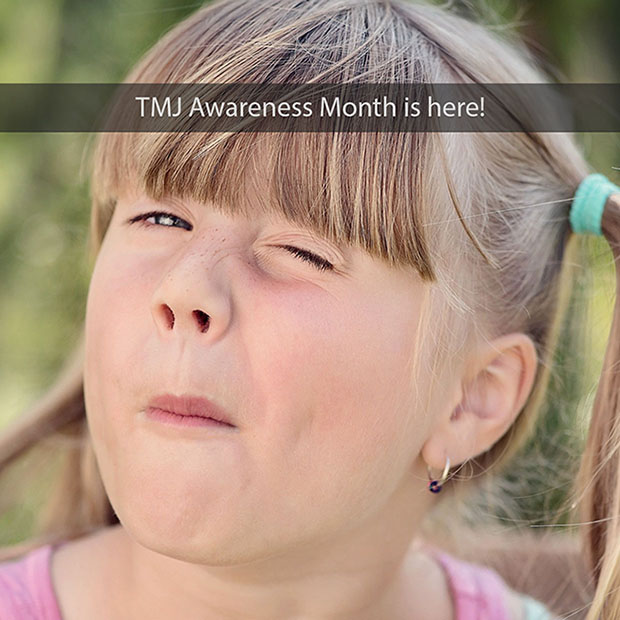November Is TMJ Awareness Month

Small, fibrous disks act as cushions between the ball and socket of our jaw joints.
If something goes wrong with that disk, such as it eroding or shifting out of proper alignment, or if arthritis wears away the cartilage on the bone or there’s a traumatic injury to the joint, the result could be a TMJ disorder. These are more common in adults, but kids can get them too.
Symptoms of TMJ Disorders
Common symptoms of a TMJ disorder include clicking, popping, or grating in the joint, pain or tenderness of the jaw, pain in one or both of the joints, difficult or painful chewing, aching pain around the face or ear, and difficulty opening or closing the jaw.
Techniques to Soothe an Aching Jaw
There are a few ways to reduce TMJ pain. Avoid yawning if possible, or control a yawn with a fist pressed beneath the jaw. Keep extreme jaw movements to a minimum (such as when singing or yawning). Remember that the jaw’s natural resting position is with the teeth slightly apart, not all the way closed. Eat more soft foods that don’t need much chewing.
How the Dentist Can Help
Most TMJ pain is temporary and will go away on its own before too long, but some requires treatment. Treatment can vary from simple measures like ice packs, exercise, and moist heat to more complex solutions like medication and splints, transcutaneous electrical nerve stimulation (TENS), ultrasound treatment, or trigger-point injections. Jaw surgery may be recommended if all else fails, and orthodontic treatment can help if the cause is related to jaw alignment.
